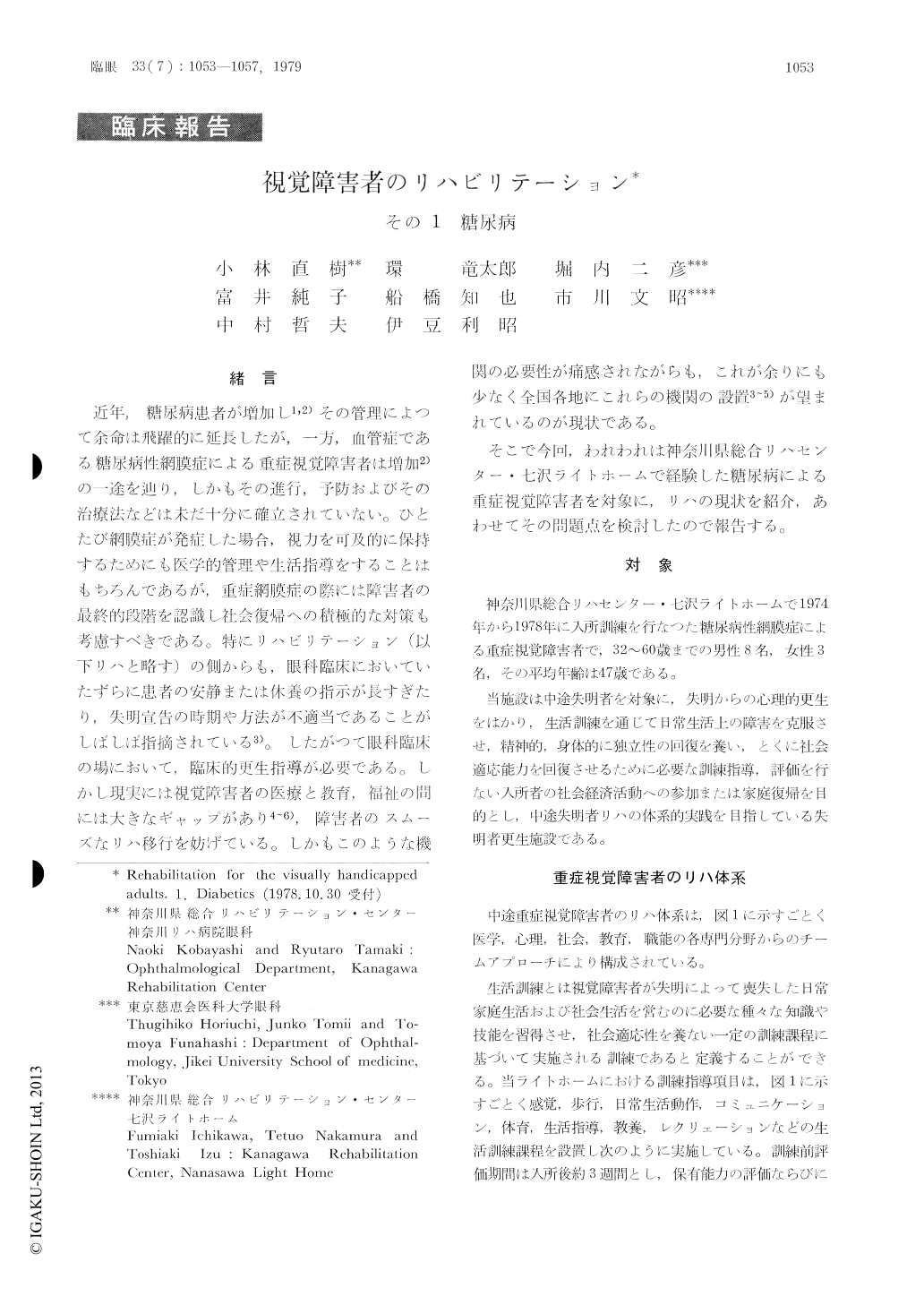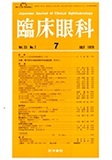Japanese
English
- 有料閲覧
- Abstract 文献概要
- 1ページ目 Look Inside
緒 言
近年,糖尿病患者が増加し1,2)その管理によつて余命は飛躍的に延長したが,一方,血管症である糖尿病性網膜症による重症視覚障害者は増加2)の一途を辿り,しかもその進行,予防およびその治療法などは未だ十分に確立されていない。ひとたび網膜症が発症した場合,視力を可及的に保持するためにも医学的管理や生活指導をすることはもちろんであるが,重症網膜症の際には障害者の最終的段階を認識し社会復帰への積極的な対策も考慮すべきである。特にリハビリテーション(以下リハと略す)の側からも,眼科臨床においていたずらに患者の安静または休養の指示が長すぎたり,失明宣告の時期や方法が不適当であることがしばしば指摘されている3)。したがつて眼科臨床の場において,臨床的更生指導が必要である。しかし現実には視覚障害者の医療と教育,福祉の間には大きなギャップがあり4〜6),障害者のスムーズなリハ移行を妨げている。しかもこのような機関の必要性が痛感されながらも,これが余りにも少なく全国各地にこれらの機関の設置3〜5)が望まれているのが現状である。
そこで今回,われわれは神奈川県総合リハセンター・七沢ライトホームで経験した糖尿病による重症視覚障害老を対象に,リハの現状を紹介,あわせてその問題点を検討したので報告する。
The present state of rehabilitation for the diabet-ics with severe impaired vision is presented and the problems are discussed, based on our experience with 11 cases who became blind due to diabetic retinopathy after having reached middle ages. The start of training were often delayed due to medical, physical and psychological grounds. It is recommended that medical staffs who are in charge of diabetic subjects with poor vision keep in mind their rehabilitation problems. The visually handi-capped diabetics were liable to be accompanied by disturbances of the peripheral nervous system and hearing.

Copyright © 1979, Igaku-Shoin Ltd. All rights reserved.


